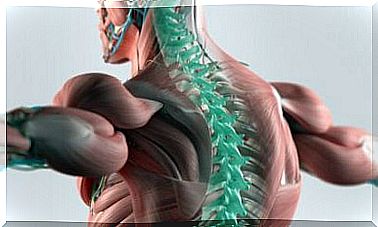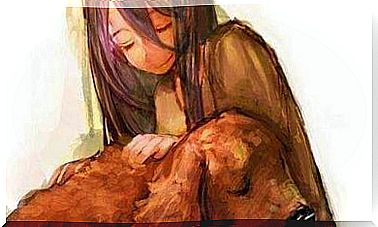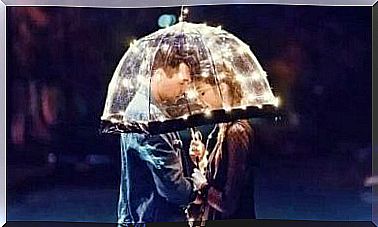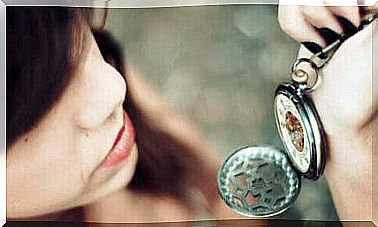The Different Types Of Shame And Their Effects On Us

Recently, a recognized North American psychoanalyst defined 4 types of shame that he considers to be fundamental. Believing that, at the present time, we are more ready to talk about events that we consider shameful, this psychoanalyst tells us about the influence of different types of shame.
In his recently published book (2018), Burgo presents four paradigms from which he studies this sentiment. But before discussing the different types of shame, it should be noted that the manifestations of the feeling of shame are grouped together in a table common to the different types :
- Reddening of the face, neck and chest
- Behaviors or thoughts of flight and / or avoidance
- Urgent need to disappear or change place
- Difficulty looking in the eyes
- Temporary mental confusion
One feeling, two different conceptions
Many people have a very negative view of shame. Nevertheless, those who scientifically study the different types of shame believe that this feeling is inherently varied and that its consequences are more moderate, less disastrous.
One way or another, shame is a relatively frequent and difficult to avoid aspect of our daily life. However, this degree of toxicity that we generally attribute to it would not be so justified. Burgo, based on 35 years of clinical observations, shows the surprising link between feelings of shame and self-esteem.
He considers that the learning derived from the interaction with shame has a more robust psychological impact than that of the inhibition linked to this feeling. The message that the author offers us is therefore optimistic and demystified.
Few are the times we take the trouble to listen and engage in a fruitful dialogue with this feeling. Because we find the different types of shame we expose ourselves to be off-putting, we frequently tend to hide them in one way or another:
- Addictions
- Perfectionism
- Feeling of self-grief
- Promiscuity
- Narcissism
Types of shame and their influence
One of the reasons why, both in the research sphere and in the clinical sphere, it is now easier to talk about the subject is because, nowadays, people tend to be less afraid. . The reluctance to talk about what makes us ashamed in today’s society is lower.
In a social context that invites us to show our true identity, to love ourselves for who we are and to live in peace with our qualities and the contents of our mind, people are more prepared to look in them and talk about it. which awakens this feeling in them. Positive psychology, so dominant today, is a clear example of advocating for the optimistic acceptation of our less desirable traits.
For Burgo, facing this feeling in all its forms is a daily occupation. It is a psychological process that, like so many others, takes place on a daily basis. Dealing with shame is therefore a natural and acceptable phenomenon.
According to this author, we can distinguish 4 types of shame.
1. Shame linked to unrequited love
It is enough simply to have loved someone and to have realized that this love was not reciprocal … It is enough to have been rejected or abandoned by the person whom we love to get a precise idea of the feeling of shame that this situation generates. Shame turns, in some cases, into humiliation.
We know that we can experience this type of shame from the first years of life… These babies who do not elicit the desired emotional reactions in their mothers after endless calls to attention experience something very similar to the shame linked to the “loving unity”
In psychological practice, it is observed that people who have been brought up in this way, namely with mothers who have not been able to develop a sufficient level of empathy in the mother-child relationship, present a structural distress which could occur. ‘assimilate to a basal shame. This would negatively condition the normal development of the individual.

2. The different types of shame: unwanted exposure
Talking about this type of shame is more common in casual conversation. There are many daily episodes associated with this type of shame. Here are a few examples: being despised in public, being seen naked …
Generally, due to its lack of seriousness and its frequency, this type of shame is temporary and does not affect the psychological well-being of the individual. However, in some cases, this type of shame can lead to trauma. It depends on the predisposition of the person and the intensity of the emotion felt.
3. Failure to meet expectations or disappointment
Here it is about the feeling of shame that arises after a failed attempt to reach a goal… Those times when we are faced with failure and all our expectations or those that have been imposed on us collapse.
The severity and potential repercussions are similar to the previous type. Here are some everyday examples that can generate this feeling:
- Failure to follow the desired professional path
- The erosion of a friendly relationship
- The failure of a romantic relationship
4. The different types of shame: exclusion or marginalization
Almost all of us are interested in our condition as social beings. We all want to develop a sense of belonging to a group. This principle applies to almost all areas of our life: work, romantic relationships, friendships… However, this feeling of belonging is sometimes threatened.
In these cases, good self-esteem and correct attributions serve as a defense against the negative influence of this type of shame. “My friends didn’t invite me to the barbecue today because I work so hard that they didn’t want to bother me. It’s not that they don’t want to be with me. ”

The conclusion about the different types of shame and their influence
This feeling can be exhausting and exasperate us… To the point that, in certain cases, it can constitute a determining element of our emotional balance and our personality. Moreover, certain personality traits considered unsuitable, such as narcissism or self-destructive tendencies, are typically associated with the poor mechanisms of confronting shame.
Saying “no” to a child can trigger a slight feeling of shame. A refusal tends to interrupt the child’s natural exploratory impulses. But this kind of shame usually doesn’t last long and usually doesn’t cause long-term sequelae.
“It is more ashamed to distrust your friends than to be deceived by them.”
-François de La Rochefoucauld-
Therefore, unless we are dealing with someone whose childhood was marked by much abuse, abandonment or trauma, the small “reservoirs” of shame we accumulate should not have permanent negative repercussions. Thus, parents do not have to worry too much about refusals that their children suffer from time to time.
Severe cases
However, in the case of people who have had a severe impact on this feeling and who decide to see a psychologist, which we strongly recommend, the therapist will have to uncover, really little by little, the person’s personal defenses after gaining his confidence.
Building trust takes time and effort, especially for people who live with a strong sense of shame and humiliation. For these people, being judged by others can be a major source of concern, especially if they are afraid of being judged by their therapist.










